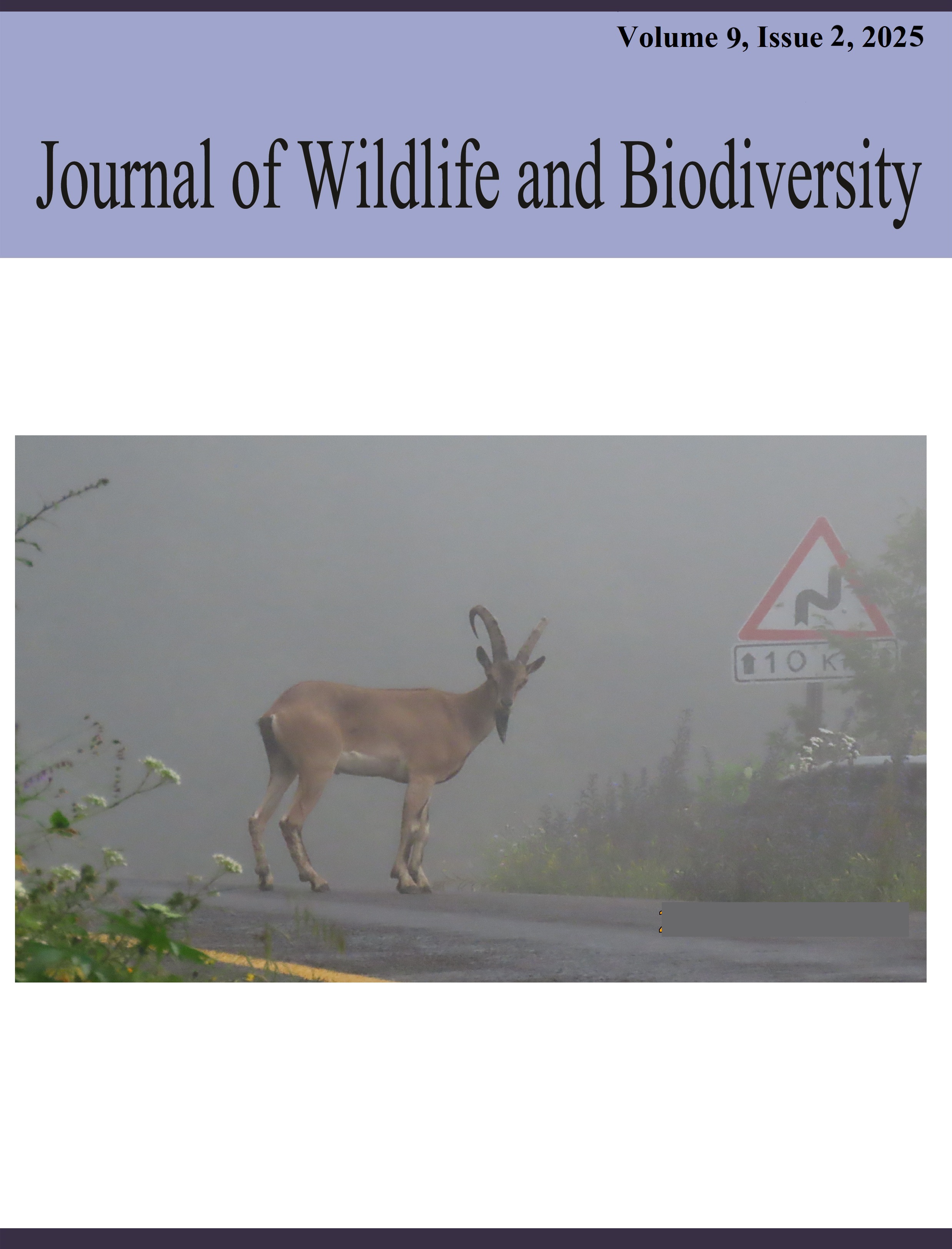Evaluation of salt tolerance in local varieties and foreign collection samples of chickpea (Cicer arietinum L.)
DOI:
https://doi.org/10.5281/zenodo.15521234Keywords:
Cicer arietinum L., chickpea, salt-stress, germination, seedlingAbstract
In this research, 20 samples, including local chickpea varieties and foreign accessions, were subjected to control treatment (distilled water) and varying concentrations of Na₂SO₄ (0.5%, 1%, and 1.5%) under thermostat conditions to assess their salinity tolerance. The results showed that plant growth, particularly the seedling development during germination, is highly sensitive to salt stress. According to the analysis, several local varieties—Guliston, Lazzat, and Iftikhor—as well as foreign accessions—SSA-2, SSA-10, SSA-11, SSA-12, SSA-16, SSA-18, SSA-19, SSA-34, SSA-35, and SSA-36—were identified as salt-tolerant. In Na₂SO₄ solutions with concentrations of 1% and 1.5%, significant reductions in germination rate, stem length, and root length were observed compared to the control and 0.5% salt concentration. In the above-mentioned salt-tolerant samples, the seedling vigour index decreased by 24.85% under low salinity (0.5% Na₂SO₄), by 73.13% under moderate salinity (1% Na₂SO₄), and by 89.82% under high salinity (1.5% Na₂SO₄). These reductions indicate that increasing salt concentrations substantially slow down the growth and development of chickpea plants, even in relatively tolerant genotypes.
References
Abdul-Baki, A., & Anderson, J.D. (1973). Physiological and biochemical deterioration of seeds. Kozlowski, T.T. (ed.) Seed biology, 2, 283-315.
Acevedo, E., Silva, P., & Silva, H. (2002). Wheat growth and physiology. In: Curtis,B.C., S. Rajaram and H. G. Macpherson (Eds.) Bread Wheat Improvement and Production, FAO Plant Production and Protection Series, No. 30. Food and Agriculture Organization of the United Nations, Rome, Italy.
Bryla, D.R., Scagel, C.F., Lukas, S.B., & Sullivan, D.M. (2021). Ion-specific Limitations of Sodium Chloride and Calcium Chloride on Growth, Nutrient Uptake, and Mycorrhizal Colonization in Northern and Southern Highbush Blueberry. Journal of the American Society for Horticultural Science, 146 (6), 399–410.
Cuartero J., Bolarín M.C., Asíns M.J. (2006). Increasing salt tolerance in the tomato. Journal of Experimental Botany, 57, 1045-1058.
Germanseva, N.I. (2009). Chickpea in the fields of the arid Volga region. Agriculture, 5, 13-14.
Gupta, B., Sengupta, A., Saha, J., & Gupta, K. (2013). Plant abiotic stress: ‘omics’ approach. Journal of Plant Biochemistry & Physiology, 1(3), 108–9.
Huang, J. & Redmann, R.E. (1995). Salt tolerance of Hordeum and Brassica species during germination and early seedling growth. Canadian Journal of Earth Sciences, 75, 815-819.
Khajeh-Hosseini, M., Powell, A.A., Bingham, I.J., Hussein, M., Powell, A.A. & Bingham, I.J. (2002). Comparison of the seed germination and early seedling growth of soybean (Glycine max (L.) Merrill) in saline conditions. Seed Sciences Research, Oxford, 12,165-172.
Khan, H.A., Siddique, K.H.M., & Colmer, T.D. (2017). Vegetative and reproductive growth of salt-stressed chickpea is carbon-limited: Sucrose infusion at the reproductive stage improves salt tolerance. Journal of Experimental Botany, 68, 2001–2011.
Khan, M.A., & Ungar, I.A. (1997). Effect of light, salinity and the thermo period on seed germination of halophytes. Canadian Journal of Botany, 75, 835-841.
Krishnamurthy, L., Serraj, R., Hash, C.T., Dakheel, A.J., & Reddy, B.V. (2007). Screening sorghum genotypes for salinity-tolerant biomass production. Euphytica, 156, 15-24.
Kumar, P., & Sharma, P.K. (2020). Soil salinity and food security in India. Frontiers in Sustainable Food Systems, doi: 10.3389/fsufs.2020.533781
Munns, R., & Gilliham, M. (2015). Salinity tolerance of crops–what is the cost? New phytologist, 208(3), 668-673.
Patil, G., Do, T., Vuong, T.D., Valliyodan, B., Lee, J.D., Chaudhary, J., Shannon, J.G., & Nguyen, H.T. (2016). Genomic-assisted haplotype analysis and the development of high-throughput SNP markers for salinity tolerance in soybean. Scientific Reports, 6, 19199.
Ramana S., Biswas A.K., Kundu S., Saha J.K. & Yadava, R.B.R. (2002). Effect of distillery effluent on seed germination in some vegetable crops. Bioresource Technology, 82, 273-275.
Sadeghi, H., Khazaei, F., Yari, L. & Sheidaei, S. (2011). Effect of seed osmo-priming on seed germination behavior and vigor of soybean (Glycine max L.). ARPN Journal Agricultural and Biological Science, 6, 39-42.
Stallknecht, G., Gilberston, K.M, Carlson, G.R., Eckhoff, J.L., Kushnak, G.D., Sims, J.R., Wescott, M.P., Tejera, N.A., Soussi, M. & Lluch, C. (2006). Physiological and nutritional indicators of tolerance to salinity in chickpea plants growing under symbiotic conditions. Environmental and Experimental Botany, 58(1-3), 17-24.
Turner, N.C., Colmer, T.D., Quealy, J., Pushpavalli, R.. Krishnamurthy, L., Kaur, J., Singh, G., Siddique, K.H.M. & Vadez, V. (2013). Salinity tolerance and ion accumulation in chickpea (Cicer arietinum L.) subjected to salt stress. Plant Soil, 365, 347–361.
Wu, D., Chen, C., Liu, Y., Yang, L. & Yong, J.W.H. (2023). Iso-osmotic calcium nitrate and sodium chloride stresses have differential effects on growth and photosynthetic capacity in tomato. Scientia Horticulturae, 312, 111883.



